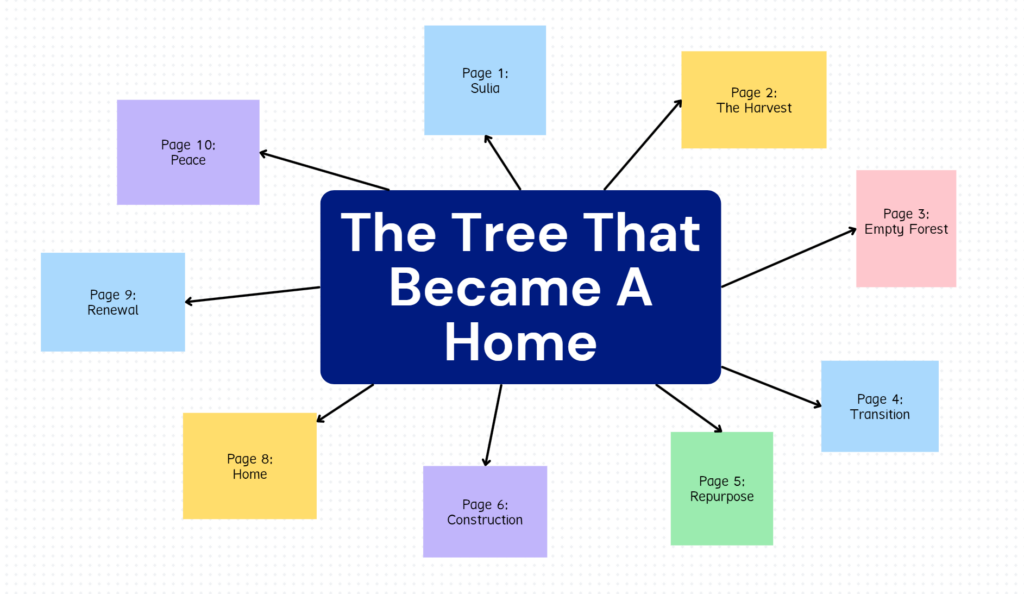For my Free Inquiry Project, I am designing and illustrating a 10-page, wordless picture book that tells the story of how a tree becomes a home. The story will not use text but instead rely on illustration to guide readers through an emotional arc: admiration for the living tree, sadness at its loss, and finally renewal as it takes on new life in the form of a home while new trees grow in its place. My goal is for the book to introduce children to ideas of stewardship, sustainability, and respect for nature’s cycles in a way that is accessible and hopeful.
I was inspired to design this project while walking through the conservatory at the Calgary Zoo last week. Surrounded by the vibrant colors and quiet beauty, I felt drawn to the theme of the garden of life. It reminded me of how deeply grateful I am for the vegetation on this Earth and all that it provides in our daily lives. Too often, we rush past these gifts, forgetting the journey from soil to seed, from harvest to plate. This special space invited me to pause, to breathe, and to recognize the wonders that so often go unnoticed. In that stillness, I felt the profound truth that we are all connected to nature, and that gratitude begins with slowing down enough to truly see it.


Learning Goals / Questions for This Week:
How can I create a wordless book that communicates both narrative and environmental stewardship clearly to children?
Which digital tools will best support my illustration process (Krita, Canva, or other software)?
What I Did / Evidence of Learning:
This week, I focused on planning and inspiration:
Created a mood board featuring BC forests, wildlife, and example wordless books.

Drafted a rough 10-page Mind Map, highlighting each stage: the thriving tree, careful harvesting, logs prepared by the community, house construction, and renewal of the forest with seedlings.

Researched digital illustration tools, including Canva tutorials for beginners.
- How to create a story book on Canva: https://youtu.be/-bg3XW1xGVU
Collected references of BC forests and native plants.
- BC Ecosystems: BC Ecosystems
- Forest Stewardship: Forest Stewardship – Province of British Columbia
Reflection:
I am excited about starting this project because it blends creativity, environmental education, and visual literacy. I chose this topic because I see value in teaching children that nature is not just a resource, but a living system we are connected to. The biggest challenge is designing images that clearly communicate the story and its stewardship themes without words. Already, I’m learning how important pacing, perspective, and visual detail are in storytelling. This work also gives me insight into how I might use images in the classroom to teach concepts like respect for nature and the importance of community.
Next Steps:
Next week, I will focus on storyboarding the 10 pages in more detail and begin designing the main elements, including the tree, forest setting, and community figures. I aim to create preliminary sketches that show the visual sequence and begin experimenting with style, composition, and colour.